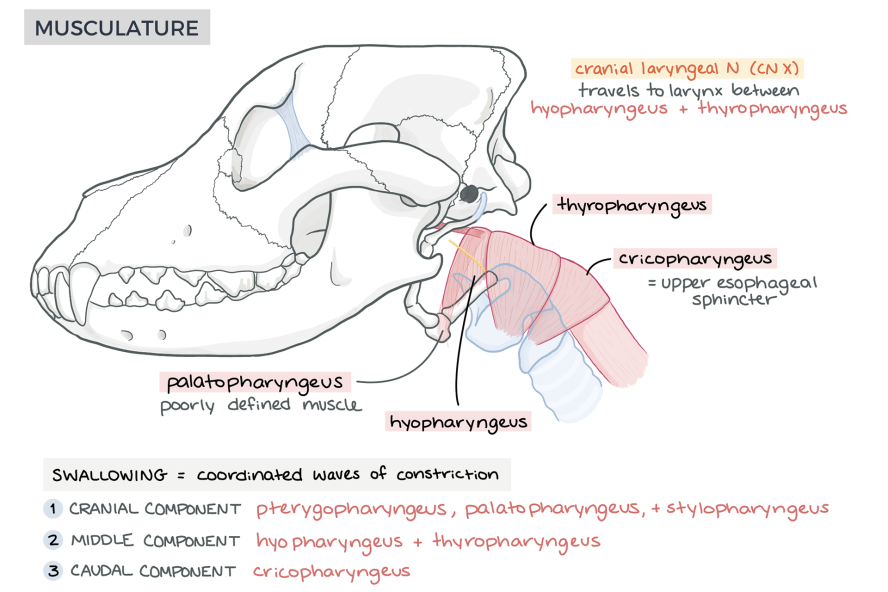-
About
- Leadership & Faculty
- News & Events
-
Academics
- Graduate
- Advanced Clinical Training
- Continuing Education
-
Student Life
-
-
Accommodations
- Our Campus
-
Accommodations
- Graduate Resources
-
-
Research
-
Hospitals & Clinics
- Emergency Care
- Hospital Services
-
Community Outreach
- Volunteer
Innovative Illustrator
Cummings School D.V.M. candidate Sydney Day, V23, fills need with veterinary medicine drawings

An artistically gifted D.V.M. candidate at Cummings School of Veterinary Medicine, Sydney Day is a self-described visual learner. So, when she found that there was insufficient supply of accurate images or illustrations to help her understand animal anatomy, she grabbed her pencils and started drawing them.
A Rhode Island native, Sydney learned technical artistic skills and techniques from her mom, a trained artist, while she was growing up and later took many courses including some at Rhode Island School of Design, but she wasn’t sure if that was the career path she desired.
After enjoying the experience of her first job at a dog daycare facility, Sydney later realized how much she loved animals and earned a bachelor’s degree in animal science from the University of Rhode Island. “Within the first week of starting classes at URI, I realized how happy it made me.”
She wanted to be close to home for veterinary school, so Cummings School provided the best option. While enduring three stints on the waiting list, Sydney earned a Master of Public Health degree in epidemiology from Boston University. Upon her acceptance to Cummings School, Sydney was thrilled to begin and aimed to soak up everything she could. “I didn’t know how to say ‘no,’ and I was very excited,” she acknowledges.
During her first year, prior to the prevalence of COVID-19, Sydney was an active member of several student clubs and organizations, including the Veterinary Business Management Association, Student Livestock Organization, and the Society for Theriogenology (animal reproduction), which she helped reinstate after more than a decade of inactivity.
Sydney enjoyed several courses, especially anatomy, which requires students to learn a lot of information through lectures, supplemented by hours of lab time where they perform dissections.
“To study, I created a list of muscles and where they originate and attach but that wasn’t working for me, so I just started drawing them,” she shares. “The photographs and illustrated material were not what I had hoped, and some muscles are so deep that you can’t see smaller muscles and structures within unless you remove bones. Since I’m a visual learner and I couldn’t see them in photos or in the lab, I started drawing them from descriptions.”
After creating her first illustrative study guide for herself, she showed it to some friends. Other classmates heard about it and asked to see it as well. “By the second or third exam, everyone wanted me to share it on our group Facebook page because they found it so helpful,” Sydney beams.
Clinical Assistant Professor Wade Tenney has encouraged Sydney along the way. “During her ultrasound rotation, I saw some of Sydney’s illustrations and was very impressed,” Tenney explains. “She has tapped into her ability to translate anatomy into art.”
Following continuous encouragement to share her veterinary illustrations, she created a website to share them online at www.daydvm.com. “Students from all different vet schools, in the U.S. and around the world, liked them,” Sydney says.
Tenney recognizes why Sydney’s work appeals to a wide audience. “Her anatomy drawings are precise but simple, making them the ideal tool to learn or better understand the anatomy of a particular region,” he says. “The fact that Sydney has shared her drawings with classmates to facilitate learning makes her skills even more special.”
After churning them out for her exams as she proceeded through coursework and sharing them online, Sydney redrew all her small animal anatomy drawings last summer to improve upon what she had originally produced. “I know the anatomy better now and I created a 100-page anatomy guide,” she says, and sells a digital version online while working to produce a printed version. “It’s tough to do while I’m still in vet school,” Sydney laments, as she progresses on her clinical rotations as a fourth-year student.
Her anatomy guide has proven popular, as Sydney estimates to have sold more than 500 to students and educators across the globe. “I enjoy the online community that was established on Instagram and Facebook,” she says. “I met them because we went online during Covid to make connections and keep motivated while school was all online.”
“Dr. Tenney suggested that I illustrate as a freelancer, so I added a tab to my website for that opportunity,” she says, looking forward to opportunities to draw a specific procedure or a piece of anatomy upon request. “I think Sydney will likely have a large following in the future as a veterinary illustrator for textbooks and journal articles,” Tenney predicts.
Once she graduates next May, Sydney hopes to pursue a clinical general practice while doing contract illustration work for veterinary medicine on the side. “I love networking with people in the profession, so I’d love to continue drawing,” she adds.
Since she likes working with all animals, Sydney aspires to join a mixed-animal general practice to gain experience before realizing her goal: owning a practice. She acknowledges, “I’ve been thinking about it since my first year.”
Department:
DVM Program